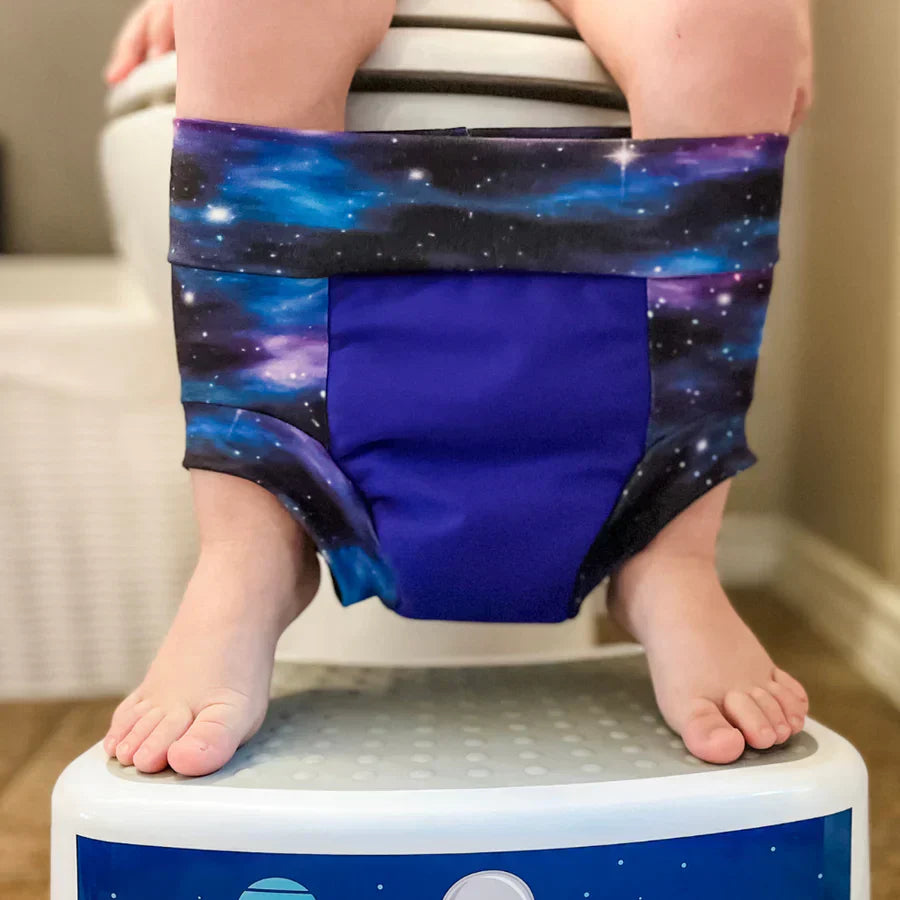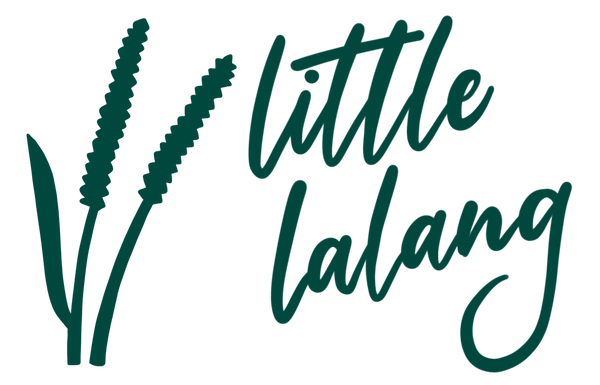
Potty Training Like a Pro: When to Start, What to Know, and How to Survive
Laura OrPotty training is one of those parenting milestones that you know you have to face sooner or later—but let’s be honest, it can feel pretty daunting.
Don’t worry though, it’s completely manageable. With the right timing, methods, and some handy tools, you’ll have your little one toilet trained before you know it.
So, when is the best time to start potty training, what’s the right method to use, and how do you survive the inevitable accidents? Let’s break it all down.
When to Start Potty Training (When’s the Best Age to Potty Train?)
If you’re feeling like potty training is happening later these days—you’re not imagining things. Back in the '60s through to the '80s, most kids were potty trained by around 25-29 months. Today, only 40-60% of kids are fully trained by age 3.
So if your MIL is stressing you out because your N1 toddler is still in diapers, you can rest in the knowledge that your child isn’t behind. Times have changed, and what’s ‘normal’ has shifted too.
There’s two main reasons to start potty training early:
-
You’ll have to change less diapers. This is beneficial from an environmental perspective, of course, but also in terms of the time and physical effort it takes.
- You’re less likely to encounter ‘stool toileting refusal’ (aka your child becoming constipated because they’re refusing to poop – trust me, it’s a thing. An unfortunately common thing, since as much as 25% of children exhibit some degree of this at some point during the training process.).
On the other hand, there are two main reasons to wait until later to toilet train:
-
Less accidents / shorter toilet training process (i.e. an older child will learn faster). For context: studies show that for parents who start toilet training around 18-21 months old, it takes on average 12-14 months for the child to be fully potty trained. For parents who start when the child is 33-36 months old, it takes on average 3-6 months for them to be fully toilet trained. So this can be a substantial difference in time and effort required.
- Older children have more reasoning skills. Meaning: you can bribe them. Also, you can tell them what to do. This can be more relaxing for many parents. With a younger child, you have to be much more physically involved in the process.
Another factor to consider: stress or major changes in the household can make it harder for your child to focus on their new “big kid” routine. In fact, many toilet-trained young children will regress when a new sibling is introduced to the family. Plus, if you’re pregnant or recovering, you may not want to subject yourself to cleaning up lots of accidents.
Ultimately, the best time to start toilet training really depends on your preferences, your child’s disposition, and your family’s current situation. If there’s a big upheaval, like moving house or welcoming a new sibling, it might be worth holding off until things are more settled.
Common Toilet Training Methods in Singapore
There's a myriad of potty training books and methods out there, which can be overwhelming and super confusing for many parents. But really, all the variations fall into 3 main approaches:
Parent-Led Approach
The key idea here is that the adults decide when it is time to toilet train and then do a dedicated push towards it.
In the more extreme versions (made famous by books like 'Oh Crap!' and '3-day potty training'), you basically take the diapers away and put your child on the toilet a lot, and within a short while, they'll be toilet trained.
(Reality check: it almost definitely takes longer than 3 days, unless your child is fairly old.)
In the less-intense versions, parents will teach the children how to sit on the potty, and then bring them to the toilet at regular intervals. They may also use reward charts, stickers, and picture books.
Many childcares in Singapore use a parent-led approach to toilet training. They won't take away the diapers completely (because they don't have time to clean all the mess that would cause), but starting in N1 or N2, they will have a teacher bring the kids to the toilet every 15 minutes or so.
Child-Led Approach
The child-led approach to potty training has gain much popularity in recent years, probably due in part to the rise of gentle parenting / respectful parenting.
This approach to toilet training is more relaxed and follows the child’s cues about when they’re ready to start potty training. Because of this, the child-led approach almost always starts when a child is older (after 3 years old).
This method can take longer, but it’s less intense for both parents and kids. The idea is that when your child is truly ready, they’ll master toilet training with minimal fuss.
This was true in both our (Hsin & Laura's) experience. Our children started toilet training around 3.5 years old, and we experienced only a couple of accidents. It’s a popular approach for parents who prioritise nurturing the child’s independence and prefer to avoid power struggles.
Elimination Communication (Infant Potty Training)
This method starts much earlier—often before your baby can walk. It involves learning to recognise your baby’s natural cues for when they need to go and holding them over a potty or toilet to “catch” it.
Elimination communication (EC) is the traditional method used by many all over the world, and many grandmas or domestic helpers will be familiar with it. Executed properly, it’s very effective and can result in your baby being out of diapers (essentially ‘toilet trained’) at a very young age.
The main downside is that it requires a significant time commitment and a sharp eye for your baby’s signals. Also, a 12-month-old just doesn’t have the physical capabilities to hold their pee for long or go to the toilet independently, so the parent will still have to be involved for quite a while.
Most families using this method also use cloth nappies or training pants as a backup for the times when they miss a cue.
A Note on Method
Many parents will use a mix of the above 3 approaches. The main thing to remember is that what works best for one family may not work for another. (Actually, having 3 children, I will say that what works best for one child may not work for another.) So hold your ideals loosely, and try not to let well-meaning aunties stress you out :)
What Equipment Do You Need to Potty Train?
For the Child-led Approach
-
Training pants / pull-up diapers: Our SmartBottoms Trainers are perfect for this. These can be pulled up and down like regular underwear but are designed to handle leaks as your child gets used to making it to the toilet in time.
- A potty or stepstool: Something simple for your child to sit on, or a stepstool to help them reach the adult toilet.
For the Parent-led Approach
-
Underwear: If you’re going full-on hardcore parent-led approach, your kid will be going commando for a few days, and then you’ll transit directly to kids’ undies. If you’re using a gradual parent-led approach, then I recommend our SmartBottoms Trainers. They look and feel like underwear but will prevent your child’s pants from getting soaked if they have an accident.
- Towels for wiping up accidents: Let’s face it, accidents happen. so having some small, thick towels on hand will make clean-up easier and eco-friendlier. Kids can pee quite a bit, so tissues or even kitchen paper towels aren’t the best option.
For Elimination Communication
-
Stool for parents: Since you’ll likely be spending a lot of time holding your little one over the potty, a stool for you to sit on can be a lifesaver.
-
Portable potty: A traditional potty can be really useful if you’re not always near a toilet. You can grab it quickly when your baby gives you the signal!
- Towels for wiping up accidents: With EC, accidents are inevitable. We highly recommend our organic cotton flats, which are highly absorbent and easy to repurpose as towels once your child toilet trains. They also make great cloth diapers as a backup!
Nighttime Potty Training: How to train kids to not pee at night?
Nighttime (and nap-time) toilet training is a whole different ball game. It’s completely normal for kids to wet the bed for months (or even years) after they’ve mastered daytime potty training.
As a rough gauge, 80-85% of children are able to stay dry through the night by age 5. Many children (especially boys) will still need night diapers up to 7 years old.
Nighttime bladder control – aka the ability to either hold your pee for 11 hours straight or wake yourself up if and when you need to pee – takes longer to develop.
Some children just don’t produce sufficient vasopressin (an anti-diuretic hormone that tells the kidneys to produce less pee while asleep) until they’re older, so their bladders will be unable to hold the pee they produce overnight.
Many children will naturally night train on their own. However, if you want to encourage the process, here’s what you can do:
- Bring your child to the toilet in the middle of the night for a ‘dream wee’
- Limit liquids before bed
- Make sure your child uses the toilet right before bed
For parents wanting a more eco-friendly option to disposable diapers, we highly recommend our Motherease Bedwetter Pants. They’re incredibly soft and comfortable, and highly absorbent - a great option for keeping the bed dry without making your child feel like they’re back in diapers.
Final Thoughts
Potty training can feel like an intimidating milestone, but remember—every child’s journey is different, and that’s perfectly okay.
Whether you’re using a child-led approach, tackling the three-day method, or diving into nighttime potty training, patience and flexibility will get you through. And hey, if you have the right equipment like training pants and bedwetter pants, you’re already halfway there ;)
In the end, how you choose to potty train won’t define you as a mum or shape your child’s future. So take a deep breath, trust your instincts, and remember—you’ve got this!
